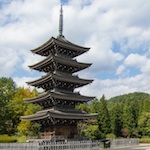| Hot Topics | |
|---|---|
Tohoku Earthquake, Tsunami and Nuclear Disaster!!!
Re: Tohoku Earthquake, Tsunami and Nuclear Disaster!!!
OK This is ridiculous. People are now ridiculing this Smile campaign.
http://counterpsyops.com/2012/01/29/fuk ... ffect-you/
If you smile you WILL be safer from Radiation. Think of how much life a smile gives you. Smiling is proven to help you live longer. It WILL counteract any lessening of lifespan caused by any rad, which we know is all nonsense anyway. NOTHING TO FEAR!
Banana Banzai!
http://counterpsyops.com/2012/01/29/fuk ... ffect-you/
If you smile you WILL be safer from Radiation. Think of how much life a smile gives you. Smiling is proven to help you live longer. It WILL counteract any lessening of lifespan caused by any rad, which we know is all nonsense anyway. NOTHING TO FEAR!
Banana Banzai!
- Level Three
Re: Tohoku Earthquake, Tsunami and Nuclear Disaster!!!
Russell wrote:Breaking: Level 1 Warning Upgraded to Level 3: Serious Incident Now:
Don't eat the the fucking "saury" (NHK News)!
______________________
TEPCO Announces Plan To Stimulate Saury Fishing Through Ocean Warming
@DailyGomiuri (@DailyGomiuri) twitter September 2, 2013
You do not have the required permissions to view the files attached to this post.
-

Taro Toporific - Posts: 10021532
- Images: 0
- Joined: Tue Sep 10, 2002 2:02 pm
Re: Tohoku Earthquake, Tsunami and Nuclear Disaster!!!
Olympics vote pushing Gov't on Fukushima crisis
The Japanese government on Tuesday pledged 47 billion yen to contain leaks and decontaminate radioactive water from the tsunami-crippled Fukushima nuclear plant, as the government stepped up its intervention in the worst atomic disaster in a quarter century.
The announcement comes just days before the International Olympics Committee decides whether Tokyo - 230 km from the wrecked plant - will host the 2020 Olympics and the government is keen to show the crisis is under control. Madrid and Istanbul are the rival candidates.
“The world is watching to see if we can carry out the decommissioning of the Fukushima nuclear power plant, including addressing the contaminated water issues,” Prime Minister Shinzo Abe told cabinet ministers, who met to approve the plan.
The government intervention represents only a tiny slice of the response to the Fukushima crisis triggered by the March 2011 earthquake and tsunami, which caused reactor meltdowns at the plant. The clean-up, including decommissioning the ruined reactors, will take decades and rely on unproven technology.
The measures do not address the full problem of water management at the plant, leave the fate of Fukushima operator Tokyo Electric Power Co (TEPCO) unclear, and do not address the bigger problem of decommissioning. The sensitive job of removing spent fuel rods is to start in the coming months.
Nor do they clarify who will eventually foot the bill.
“This is a matter of public safety, so the country has to take the lead on this issue and respond as quickly as possible. Figuring out who to bill for the costs can come later,” Economics Minister Akira Amari told a news conference.
Chief Cabinet Secretary Yoshihide Suga told a separate news conference that the government would spend a total of 47 billion yen, including 21 billion yen in emergency reserve funds from this year’s budget.
Scientists will freeze the soil around the stricken reactors to form an impenetrable wall they hope will direct groundwater away from the plant. This will entail burying pipes vertically and passing refrigerant through them. Officials estimate the whole project will take two years and cost around 32 billion yen.
The remaining 15 billion yen will be used to improve a water treatment system meant to drastically reduce radiation levels in the contaminated water.
[...]
Critics said the government was mainly trying to cool down international media coverage ahead of the Olympics decision.
“At a moment when international public opinion is worrying about the long-term consequences of repeated leaks at the site, Tokyo seems to obeying the short-term logic of waiting until the Olympics decision is over,” Mycle Schneider, an independent nuclear energy analyst based in Paris who frequently visits Japan, said by email. A more sustainable option, he added, would be to seek global support to confront Fukushima’s unprecedented challenges.
Motegi denied the Olympic bid was the main motivating factor. “The government felt that we want to be fully involved and put together fundamental measures regardless of the decision on where they will hold the Games,” he said.
More
“To learn who rules over you, simply find out who you are not allowed to criticize.”
“I know not with what weapons World War III will be fought, but World War IV will be fought with sticks and stones.” ― Albert Einstein
-

Russell - Maezumo
- Posts: 8580
- Images: 1
- Joined: Fri Aug 13, 2010 11:51 pm
Re: Tohoku Earthquake, Tsunami and Nuclear Disaster!!!
Sure...cost of Olympic installation + cost of cleanup... Both rushed... What could go wrong... Er...
-

Coligny - Posts: 21821
- Images: 10
- Joined: Sat Jan 17, 2009 8:12 pm
- Location: Mostly big mouth and bad ideas...
Re: Tohoku Earthquake, Tsunami and Nuclear Disaster!!!
I'm starting to hope that they get the Olympic bid...and this bullshit they're selling as the best they can do blows up in their faces with the rest of the world watching.
-

matsuki - Posts: 16047
- Joined: Wed Feb 02, 2011 4:29 pm
- Location: All Aisu deserves a good bukkake
Re: Tohoku Earthquake, Tsunami and Nuclear Disaster!!!
chokonen888 wrote:I'm starting to hope that they get the Olympic bid...and this bullshit they're selling as the best they can do blows up in their faces with the rest of the world watching.
Be careful what you wish for.
-

Yokohammer - Posts: 5090
- Joined: Tue Sep 30, 2008 6:41 pm
- Location: South of Sendai
Re: Tohoku Earthquake, Tsunami and Nuclear Disaster!!!
Yokohammer wrote:chokonen888 wrote:I'm starting to hope that they get the Olympic bid...and this bullshit they're selling as the best they can do blows up in their faces with the rest of the world watching.
Be careful what you wish for.
No shit. That sounds like cutting off your nose to spite your own face.
-

Samurai_Jerk - Maezumo
- Posts: 14387
- Joined: Mon Feb 09, 2004 7:11 am
- Location: Tokyo
Re: Tohoku Earthquake, Tsunami and Nuclear Disaster!!!
Choko's current life plan has him outside of Tokyo by 2020....
-

wagyl - Maezumo
- Posts: 5950
- Images: 0
- Joined: Thu Mar 17, 2011 11:08 pm
- Location: The Great Plain of the Fourth Instance
Re: Tohoku Earthquake, Tsunami and Nuclear Disaster!!!
wagyl wrote:Choko's current life plan has him outside of Tokyo by 2020....
True but we all know that shit ain't gonna last.
Faith is believing what you know ain't so. -- Mark Twain
-

Samurai_Jerk - Maezumo
- Posts: 14387
- Joined: Mon Feb 09, 2004 7:11 am
- Location: Tokyo
Re: Tohoku Earthquake, Tsunami and Nuclear Disaster!!!
Samurai_Jerk wrote:wagyl wrote:Choko's current life plan has him outside of Tokyo by 2020....
True but we all know that shit ain't gonna last.
Hence "current"
-

wagyl - Maezumo
- Posts: 5950
- Images: 0
- Joined: Thu Mar 17, 2011 11:08 pm
- Location: The Great Plain of the Fourth Instance
Re: Tohoku Earthquake, Tsunami and Nuclear Disaster!!!
Samurai_Jerk wrote:Yokohammer wrote:chokonen888 wrote:I'm starting to hope that they get the Olympic bid...and this bullshit they're selling as the best they can do blows up in their faces with the rest of the world watching.
Be careful what you wish for.
No shit. That sounds like cutting off your nose to spite your own face.
I didn't mean "literally" blows up...you can imagine all the Geiger counters that will come over with the Olympic hoard, now imagine the situation if someone finds some shit in the food, A/C unit, etc etc etc.
-

matsuki - Posts: 16047
- Joined: Wed Feb 02, 2011 4:29 pm
- Location: All Aisu deserves a good bukkake
Re: Tohoku Earthquake, Tsunami and Nuclear Disaster!!!
chokonen888 wrote:Samurai_Jerk wrote:Yokohammer wrote:chokonen888 wrote:I'm starting to hope that they get the Olympic bid...and this bullshit they're selling as the best they can do blows up in their faces with the rest of the world watching.
Be careful what you wish for.
No shit. That sounds like cutting off your nose to spite your own face.
I didn't mean "literally" blows up...you can imagine all the Geiger counters that will come over with the Olympic hoard, now imagine the situation if someone finds some shit in the food, A/C unit, etc etc etc.
it will be massively broadcasted in the media and Japan will be blamed for "contaminating the Olympics"
-

IparryU - Maezumo
- Posts: 4285
- Joined: Thu Jun 04, 2009 11:09 pm
- Location: Balls deep draining out
Re: Tohoku Earthquake, Tsunami and Nuclear Disaster!!!
wagyl wrote:Samurai_Jerk wrote:wagyl wrote:Choko's current life plan has him outside of Tokyo by 2020....
True but we all know that shit ain't gonna last.
Hence "current"
Hey now, I'm out of Tokeeohh next month...and back again in Nov...and Dec...and so on.
-

matsuki - Posts: 16047
- Joined: Wed Feb 02, 2011 4:29 pm
- Location: All Aisu deserves a good bukkake
Re: Tohoku Earthquake, Tsunami and Nuclear Disaster!!!
chokonen888 wrote:...starting to hope that they get the Olympic bid...and this bullshit they're selling as the best they can do blows up in their faces with the rest of the world watching.
twitter wrote:Tokyo Olympic Committee Bombarded with Questions on Fukushima Water Leaks
---Jiji Press / 2013 Sept. 4
via Shogannai (@Shogannai) twitter September 5, 2013
You do not have the required permissions to view the files attached to this post.
-

Taro Toporific - Posts: 10021532
- Images: 0
- Joined: Tue Sep 10, 2002 2:02 pm
Re: Tohoku Earthquake, Tsunami and Nuclear Disaster!!!
LOL, love that print!
I guess the other side of the coin is if the J-gov actually takes the situation more seriously and starts monitoring more food for contamination (radiation not being the only thing they should be checking for)
I guess the other side of the coin is if the J-gov actually takes the situation more seriously and starts monitoring more food for contamination (radiation not being the only thing they should be checking for)
-

matsuki - Posts: 16047
- Joined: Wed Feb 02, 2011 4:29 pm
- Location: All Aisu deserves a good bukkake
Re: Tohoku Earthquake, Tsunami and Nuclear Disaster!!!
chokonen888 wrote:LOL, love that print!
Our PM...perennially with the runs
-

Screwed-down Hairdo - Maezumo
- Posts: 6721
- Joined: Wed May 20, 2009 7:03 pm
Re: Tohoku Earthquake, Tsunami and Nuclear Disaster!!!
I could so be prime minister here... If it was the only skill needed...
-

Coligny - Posts: 21821
- Images: 10
- Joined: Sat Jan 17, 2009 8:12 pm
- Location: Mostly big mouth and bad ideas...
Re: Tohoku Earthquake, Tsunami and Nuclear Disaster!!!
Camera at reactor 1 finds water entry point
Yep, I read that a couple of months ago on some nuclear forum. It's the cable trenches through which the water flows. Good to know that TEPCO finally figured that out too...
More
An entry point for some of the groundwater flooding the crippled Fukushima No. 1 plant has been found at reactor 1, according to Tokyo Electric Power Co.
Tepco will consider measures to halt or divert the water by conducting more surveys to determine exactly where it is entering. Cracks in the basement are considered a possibility.
An estimated 400 tons of toxic groundwater are flowing into the four damaged reactor units each day, compounding the volume of highly radioactive water being produced by the makeshift cooling apparatus set up after the triple core meltdowns of March 2011. The fuel inside must be submerged at all times to prevent it from igniting.
The groundwater is believed to be the primary source of the radioactive material entering the sea and potentially poses great danger to the environment.
The entry point is near a basement wall of unit 1′s turbine building, which is connected to and on the east side of the reactor building. Tepco workers found the entry point by drilling a hole into the ceiling of the basement and inserting a video camera, which captured images of water trickling from a point above the wall.
The water used to cool the fuel eventually flows into the turbine building, where it is believed to mingle with water intruding from outside.
The turbine building is also connected to an underground trench that runs toward the coast. Highly radioactive water from the trench is believed to be mixing with separate groundwater flows before entering the sea.
Yep, I read that a couple of months ago on some nuclear forum. It's the cable trenches through which the water flows. Good to know that TEPCO finally figured that out too...
More
“To learn who rules over you, simply find out who you are not allowed to criticize.”
“I know not with what weapons World War III will be fought, but World War IV will be fought with sticks and stones.” ― Albert Einstein
-

Russell - Maezumo
- Posts: 8580
- Images: 1
- Joined: Fri Aug 13, 2010 11:51 pm
Re: Tohoku Earthquake, Tsunami and Nuclear Disaster!!!
Coligny wrote:I could so be prime minister here... If it was the only skill needed...
One way you can solve that, is by giving everyone else the shits.
-

wagyl - Maezumo
- Posts: 5950
- Images: 0
- Joined: Thu Mar 17, 2011 11:08 pm
- Location: The Great Plain of the Fourth Instance
Re: Tohoku Earthquake, Tsunami and Nuclear Disaster!!!
Lots of Olympics-related news suddenly.
NRA says Fukushima water leak risk exaggerated
Hmm. Must have received pressure from the government.
Games can inspire Fukushima youth: Tokyo bid director
And now they suddenly care about the Fukushima youth?
Japan says it is in touch with U.S., others on Fukushima water crisis
A little late, ain't it?
Tokyo sets up English website on radiation
A little late, ain't it?
JOC delegates in radiation spin control
The point is not whether Tokyo is safe now, but whether it is safe in 2020.
As long as those fuel rods have not been recovered from the storage pools and reactor vessels, the situation can not be called stable. Enter a natural disaster (earthquake, tsunami, tornado, typhoon, flooding due to heavy rain, etc), and Fukushima could become fucked up again, when some of those fuel rods start to burn. Then, Tokyo is suddenly not so safe anymore under all circumstances.
NRA says Fukushima water leak risk exaggerated
Hmm. Must have received pressure from the government.
Games can inspire Fukushima youth: Tokyo bid director
And now they suddenly care about the Fukushima youth?
Japan says it is in touch with U.S., others on Fukushima water crisis
A little late, ain't it?
Tokyo sets up English website on radiation
A little late, ain't it?
JOC delegates in radiation spin control
The radiation level in Tokyo is the same as London, New York and Paris, like the major cities in the world. It’s absolutely safe.
The point is not whether Tokyo is safe now, but whether it is safe in 2020.
As long as those fuel rods have not been recovered from the storage pools and reactor vessels, the situation can not be called stable. Enter a natural disaster (earthquake, tsunami, tornado, typhoon, flooding due to heavy rain, etc), and Fukushima could become fucked up again, when some of those fuel rods start to burn. Then, Tokyo is suddenly not so safe anymore under all circumstances.
“To learn who rules over you, simply find out who you are not allowed to criticize.”
“I know not with what weapons World War III will be fought, but World War IV will be fought with sticks and stones.” ― Albert Einstein
-

Russell - Maezumo
- Posts: 8580
- Images: 1
- Joined: Fri Aug 13, 2010 11:51 pm
Re: Tohoku Earthquake, Tsunami and Nuclear Disaster!!!
South Korea bans more Japan fishery products from near Fukushima on eve of Olympic decision
Reuters
South Korea banned all fishery imports from a swath of Japan around the crippled Fukushima nuclear plant on Friday, dealing another blow to Tokyo's credibility on the eve of the capital's bid to host the Olympics.
Just hours after Prime Minister Shinzo Abe broke away early from a global summit in Russia to personally back Tokyo's bid to host the 2020 Summer Games, Seoul extended a ban on 50 imports from eight Japanese prefectures, including Fukushima, due to concerns about radiation contamination.
"The measures are due to the sharply increased concern in the public about the flow of hundreds of metric tons (1 metric ton = 1.1023 tons) of contaminated water into the ocean at the site of the Fukushima nuclear accident in Japan," a spokesman for the Prime Minister's office told reporters.
Korea's move, which takes effect on Monday, adds to international pressure on Japan to fix the crisis in Fukushima, 230 km (140 miles) from Tokyo.
China has banned the import of dairy, vegetable and seafood products from at least 5 Japanese prefectures, including Fukushima, since March 2011.
Fukushima's embattled operator, Tokyo Electric Power Co, has been forced to reverse denials and admit that 2 1/2 years after the reactor was wrecked by an earthquake and tsunami, it is leaking hundreds of metric tons of radioactive water a day into the Pacific Ocean and radiation levels have spiked.
Japan has struggled to assure the International Olympic Committee, meeting in Argentina, and the public at large that it can manage the Fukushima crisis.
Tokyo's bid for the Olympics is a high-stakes gamble for Abe and his "Abenomics" program. The right to host the games would likely boost Abe's popularity and could potentially spur his signature pro-growth policies for the world's third-biggest economy.
Abe's government stepped in this week, pledging nearly half a billion dollars to help Tokyo Electric Power Co try to contain the contaminated water.
Tokyo's Olympic bid chief on Wednesday played down fears over Fukushima, saying Tokyo's radiation level is comparable to London, Paris and New York.
Tokyo pushed back against the ban on Monday. Chief Cabinet Secretary Yoshihide Suga told a news conference that the water contamination is affecting only a very small area. Japan wants Korea to decide on Japanese imports based on scientific data.
Korea's extended fishery-import ban will remain in place indefinitely, Vice Fisheries Minister Son Jae-hak told the news briefing, saying information received from Japan was not good enough to properly judge the situation.
Seoul said it would also now tighten its testing on fishery imports from other areas of Japan...
Reuters
•I prefer liberty with danger to peace with slavery.•
-

Mike Oxlong - Posts: 6818
- Joined: Wed Oct 20, 2004 5:47 pm
- Location: 古き良き日本
Re: Tohoku Earthquake, Tsunami and Nuclear Disaster!!!
Russell wrote:when some of those fuel rods start to burn.
OK, I'll bite. What makes you think some of the fuel rods might start to burn?
(Yes, I know I am talking to someone who seemed worried about pacu entering the Inland Sea. It is not important, but I never got a feel for whether that was a genuine concern.)
-

wagyl - Maezumo
- Posts: 5950
- Images: 0
- Joined: Thu Mar 17, 2011 11:08 pm
- Location: The Great Plain of the Fourth Instance
Re: Tohoku Earthquake, Tsunami and Nuclear Disaster!!!
wagyl wrote:Russell wrote:when some of those fuel rods start to burn.
OK, I'll bite. What makes you think some of the fuel rods might start to burn?
(Yes, I know I am talking to someone who seemed worried about pacu entering the Inland Sea. It is not important, but I never got a feel for whether that was a genuine concern.)
Ok, be cute, go read this one:
http://en.wikipedia.org/wiki/Spent_fuel_pool
Check the topic on risks and criticality. Then come back with a refreshed one man show.
Also, if you really need more help to get up to speed:
http://en.wikipedia.org/wiki/Nuclear_chain_reaction
Last edited by Coligny on Fri Sep 06, 2013 2:08 pm, edited 1 time in total.
-

Coligny - Posts: 21821
- Images: 10
- Joined: Sat Jan 17, 2009 8:12 pm
- Location: Mostly big mouth and bad ideas...
Re: Tohoku Earthquake, Tsunami and Nuclear Disaster!!!
wagyl wrote:Russell wrote:when some of those fuel rods start to burn.
OK, I'll bite. What makes you think some of the fuel rods might start to burn?
(Yes, I know I am talking to someone who seemed worried about pacu entering the Inland Sea. It is not important, but I never got a feel for whether that was a genuine concern.)
This is actually a legitimate concern.
If the rods get too close to each other or touch during the removal process, a reaction can start and that means heat.
Normally the removal process is handled by a precise computer controlled mechanism which is now unfortunately defunct. There's also a bunch of debris in the pool. I'm sure the greatest care will be taken, but the job will have to be done more or less manually. If there's an accident during removal ... like for example, a rod catches on a bit of debris in the pool and is dropped or even tilts and touches another rod ... there could be trouble.
It's not simply a matter of pulling the rods out of the pool under "normal" conditions. Obviously the people who will be doing the job understand that situation very well. The problem is that it's sort of unknown territory. I reckon there'll be a fair amount of fingernail biting and praying going on.
-

Yokohammer - Posts: 5090
- Joined: Tue Sep 30, 2008 6:41 pm
- Location: South of Sendai
Re: Tohoku Earthquake, Tsunami and Nuclear Disaster!!!
Yokohammer wrote:wagyl wrote:Russell wrote:when some of those fuel rods start to burn.
OK, I'll bite. What makes you think some of the fuel rods might start to burn?
(Yes, I know I am talking to someone who seemed worried about pacu entering the Inland Sea. It is not important, but I never got a feel for whether that was a genuine concern.)
This is actually a legitimate concern.
If the rods get too close to each other or touch during the removal process, a reaction can start and that means heat.
Normally the removal process is handled by a precise computer controlled mechanism which is now unfortunately defunct. There's also a bunch of debris in the pool. I'm sure the greatest care will be taken, but the job will have to be done more or less manually. If there's an accident during removal ... like for example, a rod catches on a bit of debris in the pool and is dropped or even tilts and touches another rod ... there could be trouble.
It's not simply a matter of pulling the rods out of the pool under "normal" conditions. Obviously the people who will be doing the job understand that situation very well. The problem is that it's sort of unknown territory. I reckon there'll be a fair amount of fingernail biting and praying going on.
Interesting. I will be the first to admit that I don't know the quantity of fuel in a fuel rod or its purity, but are you suggesting that there is not sufficient fuel in an isolated rod for sustain a reaction (which I would agree with) but there is in say three or four if they touch? Also my understanding was that fuel rod casings are pretty damn difficult to set alight.
-

wagyl - Maezumo
- Posts: 5950
- Images: 0
- Joined: Thu Mar 17, 2011 11:08 pm
- Location: The Great Plain of the Fourth Instance
Re: Tohoku Earthquake, Tsunami and Nuclear Disaster!!!
wagyl wrote:Yokohammer wrote:wagyl wrote:Russell wrote:when some of those fuel rods start to burn.
OK, I'll bite. What makes you think some of the fuel rods might start to burn?
(Yes, I know I am talking to someone who seemed worried about pacu entering the Inland Sea. It is not important, but I never got a feel for whether that was a genuine concern.)
This is actually a legitimate concern.
If the rods get too close to each other or touch during the removal process, a reaction can start and that means heat.
Normally the removal process is handled by a precise computer controlled mechanism which is now unfortunately defunct. There's also a bunch of debris in the pool. I'm sure the greatest care will be taken, but the job will have to be done more or less manually. If there's an accident during removal ... like for example, a rod catches on a bit of debris in the pool and is dropped or even tilts and touches another rod ... there could be trouble.
It's not simply a matter of pulling the rods out of the pool under "normal" conditions. Obviously the people who will be doing the job understand that situation very well. The problem is that it's sort of unknown territory. I reckon there'll be a fair amount of fingernail biting and praying going on.
Interesting. I will be the first to admit that I don't know the quantity of fuel in a fuel rod or its purity, but are you suggesting that there is not sufficient fuel in an isolated rod for sustain a reaction (which I would agree with) but there is in say three or four if they touch? Also my understanding was that fuel rod casings are pretty damn difficult to set alight.
I don't know the dirty details myself, but I do believe there's a chance of criticality in a spent fuel pool if the normal parameters ... distance between assemblies, neutron absorbers, whatever ... are disrupted. There's also the simple fact that those used fuel rods emit a helluva lot of radiation when exposed, so if they just heat up a bit and the water boils off that would be a problem too. I'd like to be able to assume that they've got the cooling water issue under control, but I think it's pretty clear that they haven't.
The scary part is that nobody has ever done this before, so there are no tried and proven procedures or solutions to possible problems. We've already seen how much damage domino-effect type problems can cause, and how ill-prepared TEPCO have been in dealing with them. Just one dropped rod could knock a bunch of others out of kilter, for example, and so on and and so on ...
Seriously, this spent fuel removal thing is going to be delicate, even if there's no actual "burning" involved.
-

Yokohammer - Posts: 5090
- Joined: Tue Sep 30, 2008 6:41 pm
- Location: South of Sendai
Re: Tohoku Earthquake, Tsunami and Nuclear Disaster!!!
Coligny wrote:http://en.wikipedia.org/wiki/Spent_fuel_pool
Check the topic on risks and criticality.
The biggest take-home from that is
Wiki, quoting US Nuclear Regulatory Commission wrote:The Nuclear Regulatory Commission estimates that many of the nuclear power plants in the United States will be out of room in their spent fuel pools by 2015, most likely requiring the use of temporary storage of some kind.
-

wagyl - Maezumo
- Posts: 5950
- Images: 0
- Joined: Thu Mar 17, 2011 11:08 pm
- Location: The Great Plain of the Fourth Instance
Re: Tohoku Earthquake, Tsunami and Nuclear Disaster!!!
wagyl wrote:Coligny wrote:http://en.wikipedia.org/wiki/Spent_fuel_pool
Check the topic on risks and criticality.
The biggest take-home from that isWiki, quoting US Nuclear Regulatory Commission wrote:The Nuclear Regulatory Commission estimates that many of the nuclear power plants in the United States will be out of room in their spent fuel pools by 2015, most likely requiring the use of temporary storage of some kind.
Yes. this is one of the big unknowns of nuclear power. There is still no effective means of "neutralising" the spent fuel, other than storing it somewhere for however long it takes the radiation to decay to safe levels (i.e. a very, very long time). Storage takes space, requires constant maintenance (i.e. it costs money ... forever), and it is dangerous.
-

Yokohammer - Posts: 5090
- Joined: Tue Sep 30, 2008 6:41 pm
- Location: South of Sendai
Re: Tohoku Earthquake, Tsunami and Nuclear Disaster!!!
Yokohammer wrote:Seriously, this spent fuel removal thing is going to be delicate, even if there's no actual "burning" involved.
There, you have no argument from me: it is not going to be an easy task and I'm not entirely sure anyone has the skills necessary for it. However, much of the (for want of a better word and I know it is a biased expression) "woo-niverse" seems to be fixated on this fire in the fuel rod issue, which is why I specified that bit of Russell's post. I suppose they are looking at that because they see it as a mechanism for radiation to be carried beyond the local area, so it gives them permission to be worried about it. Rather than just being concerned about simply moving the fuel rods, as you (correctly, in my opinion) are. In a way, it strikes me as a very selfish concern -- it almost looks like they are only worried about something if it has a potential impact on themselves.
-

wagyl - Maezumo
- Posts: 5950
- Images: 0
- Joined: Thu Mar 17, 2011 11:08 pm
- Location: The Great Plain of the Fourth Instance
Re: Tohoku Earthquake, Tsunami and Nuclear Disaster!!!
Yokohammer wrote:wagyl wrote:Coligny wrote:http://en.wikipedia.org/wiki/Spent_fuel_pool
Check the topic on risks and criticality.
The biggest take-home from that isWiki, quoting US Nuclear Regulatory Commission wrote:The Nuclear Regulatory Commission estimates that many of the nuclear power plants in the United States will be out of room in their spent fuel pools by 2015, most likely requiring the use of temporary storage of some kind.
Yes. this is one of the big unknowns of nuclear power. There is still no effective means of "neutralising" the spent fuel, other than storing it somewhere for however long it takes the radiation to decay to safe levels (i.e. a very, very long time). Storage takes space, requires constant maintenance (i.e. it costs money ... forever), and it is dangerous.
I'm not asking them to plan for n half-lives in the future, even though I probably should, but I am asking them to plan more than three years in advance.
-

wagyl - Maezumo
- Posts: 5950
- Images: 0
- Joined: Thu Mar 17, 2011 11:08 pm
- Location: The Great Plain of the Fourth Instance
Return to Earthquakes, Tsunamis, Nukes, and other Catastrophes
Who is online
Users browsing this forum: No registered users and 0 guests

